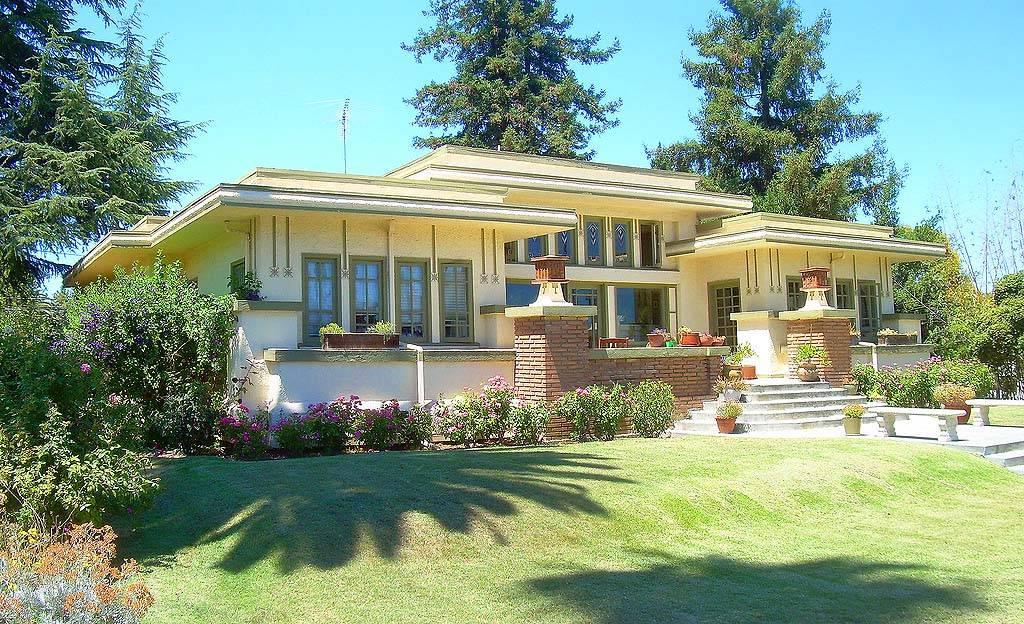#6236. Horizontal Facade: Elegant Prairie Style Residence
The image showcases an excellent example of Prairie School architecture, developed by Frank Lloyd Wright in the early 20th century. This single-story residence features characteristic horizontal lines, emphasized by wide overhanging eaves of the flat roof, creating a sense of harmony with the surrounding landscape.
The building's facade demonstrates key elements of the Prairie style: strong horizontal composition, emphasized by the low-lying structure and ribbon windows. Particularly notable are the massive brick columns on either side of the entrance area, which support the projecting canopy. The light-colored walls contrast with darker structural elements, creating a visual rhythm.
The architect masterfully integrated the house into its natural surroundings through an extensive terrace and steps that smoothly connect the structure with the well-maintained garden. The geometric simplicity of the facade is softened by abundant greenery and flowering plants that frame the building, creating a transitional zone between architecture and nature.
Special attention is drawn to the details: vertical decorative elements on the facade that contrast with the dominant horizontal of the roof, as well as elegant window frames that give the structure lightness despite its solidity. This is a superb example of organic architecture, where the building becomes a natural extension of the surrounding landscape.
